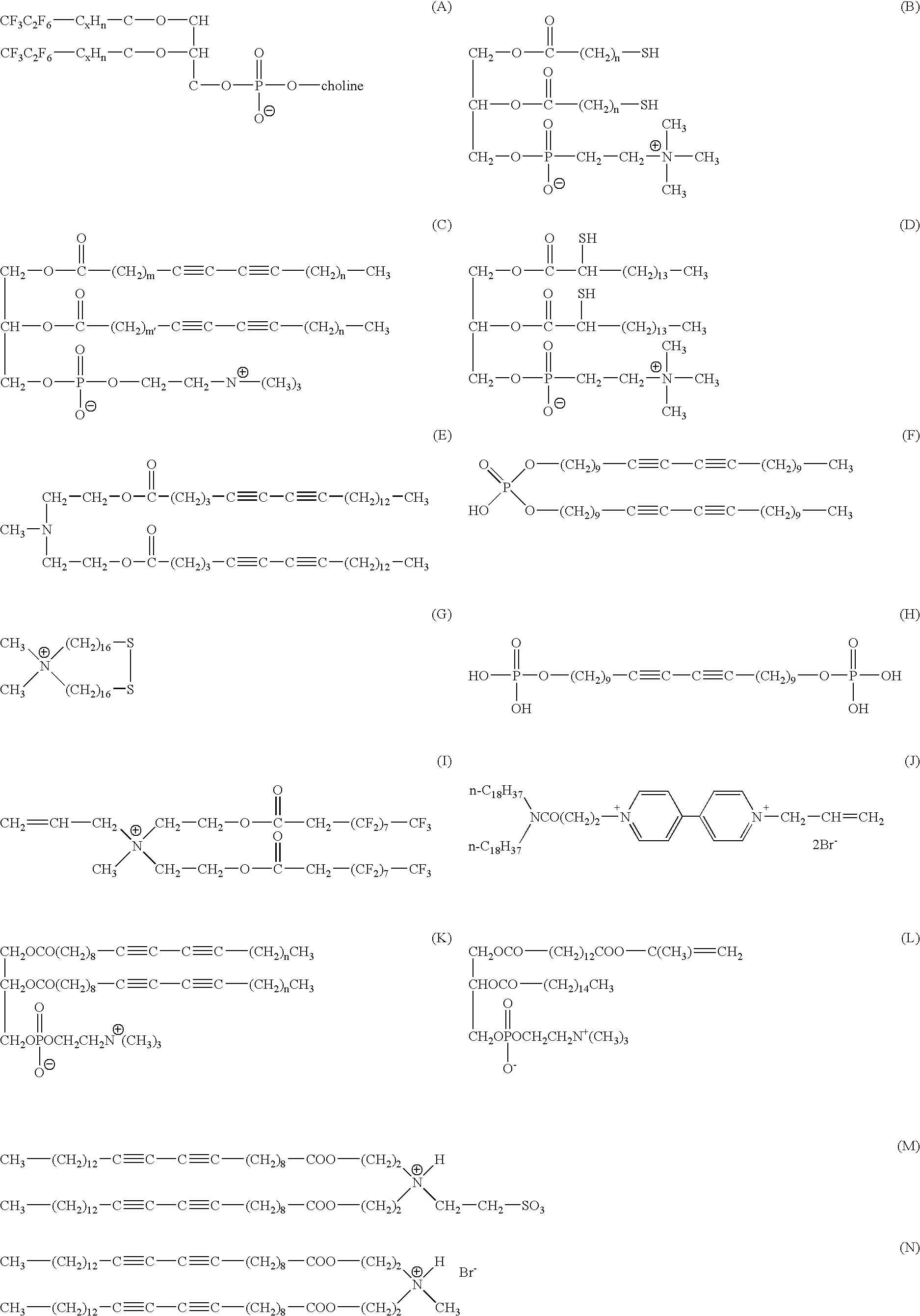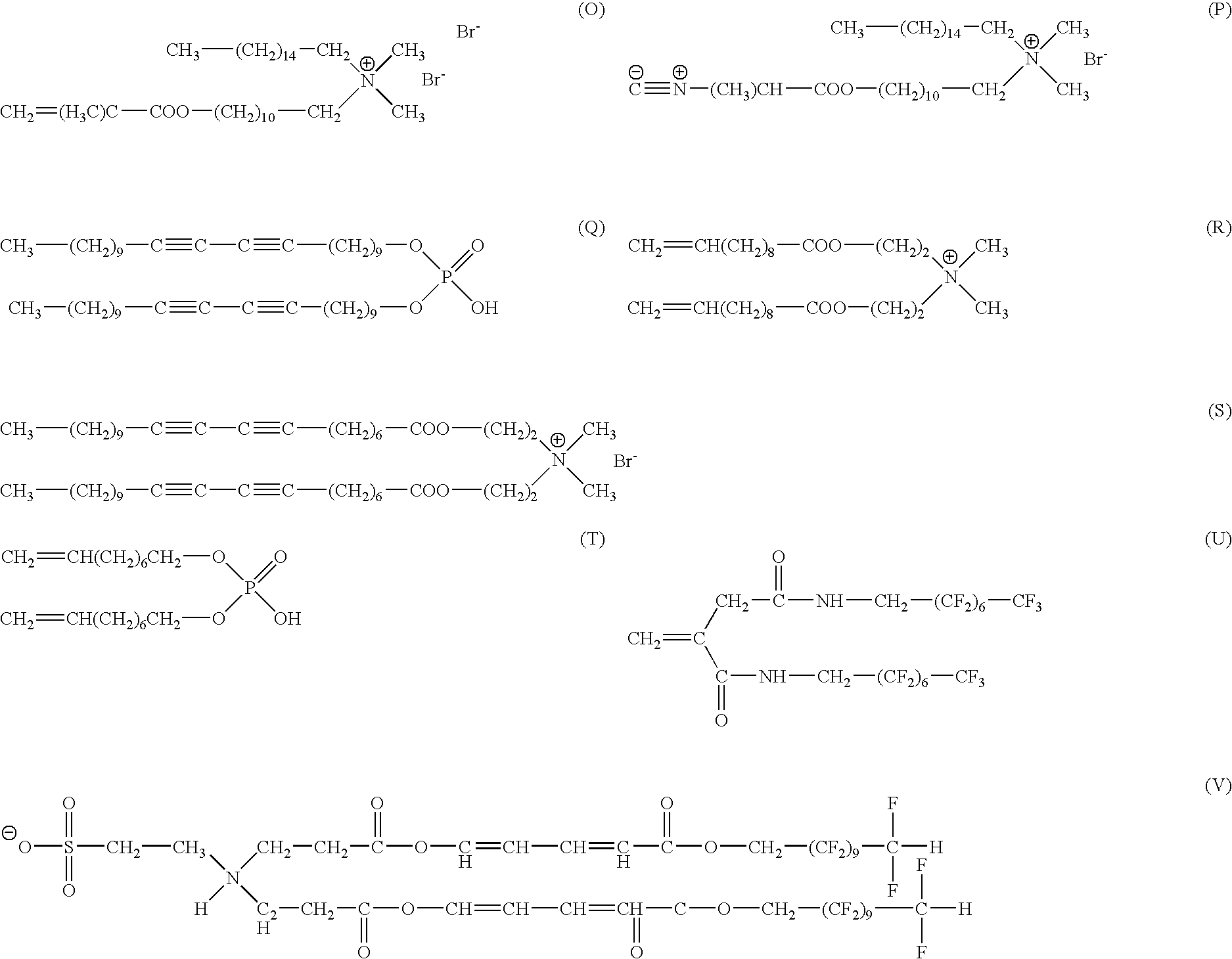Novel targeted compositions for diagnostic and therapeutic use
a composition and composition technology, applied in the field of new targeted compositions, can solve the problems of difficult differentiation of the tissue of interest from the surrounding tissue in the resulting image, low relaxivity, and high toxicity of metal ions
- Summary
- Abstract
- Description
- Claims
- Application Information
AI Technical Summary
Benefits of technology
Problems solved by technology
Method used
Image
Examples
example 1
This example is directed to the preparation of targeted gas filled vesicles within the scope of the present invention, as well as a comparison of these targeted vesicles to vesicles of the prior art.
A composition of targeted gas filled lipid vesicles, within the scope of the present invention (referred to herein as Composition 1A), was prepared with 95% dipalmitoylphosphatidylcholine and 5% dipalmitoylphosphatidylserine. This lipid mixture was lyophilized and resuspended in 8:1:1 normal saline:propylene glycol:glycerol at 5 mg / ml. To this suspension was admixed a 10% of dipalmitoylphosphatidylethanolamine labeled with lissamine rhodamine. The resulting mixture was aliquotted into 2 mL serum vials and the headspace was replaced with perfluorobutane. As a control, non-targeted liposomes (referred to herein as Composition 1B) were also prepared from a mixture composed of 82% dipalmitoyl phosphatidylcholine, 10% dipalmitoyl phosphatidic acid and 8% dipalmitoyl phosphatidylethanolamin...
example 2
The procedure of Example 1 was repeated using a vesicle composition composed of 70% DPPC, 20% DPPS and 10% DPPE-PEG5000 doped with DPPE-lissamine rhodamine (hereinafter referred to as Composition 2A). Two rabbits, one with a large artheroma and the other with several smaller artheromas were imaged with Composition 2A and Composition 1B (control). The rabbits both had significantly greater ultrasound contrast enhancement with Composition 2A compared to control, although the difference was less marked in the animal with the smaller plaques. Upon histopathologic analysis, the rhodamine-lissamine labeled vesicles were taken up in macrophages in both animals. Composition 1B was not taken up in either rabbit.
example 3
This example is directed to the preparation of a formulation of acoustically active lipospheres and a bioactive agent, within the scope of the present invention.
Paclitaxel (2 g) and soybean oil (3 g) are agitated in a vortex mixer. To this mixture was added a lipid blend of 70 mol percent DPPC, 10 mol percent DPPS and 8 mol percent DPPE-PEG5000 (Avanti Polar Lipids, Alabaster, Ala.) The mixture was stirred for 10 minutes at 50° C., then transferred to a container with normal saline (200 mL) plus 1% Tween-80 and emulsified with a Microfluidizer (10×) at 16,000 psi. The material was subdivided into 1.0 ml aliquots in 1.5 ml vials. The vials were vacuum-evacuated, and the headspace was filled with perfluorobutane. The resulting product was a suspension of drug in oil filled lipospheres containing about 0.9% paclitaxel by weight. The vials were sealed and placed on an Espe Capmix (Hamburg, Germany) and agitated at 2800 rpm for 2 minutes. The final product can be filtered to eliminate...
PUM
| Property | Measurement | Unit |
|---|---|---|
| Force | aaaaa | aaaaa |
| Force | aaaaa | aaaaa |
| Phase transition temperature | aaaaa | aaaaa |
Abstract
Description
Claims
Application Information
 Login to View More
Login to View More - R&D
- Intellectual Property
- Life Sciences
- Materials
- Tech Scout
- Unparalleled Data Quality
- Higher Quality Content
- 60% Fewer Hallucinations
Browse by: Latest US Patents, China's latest patents, Technical Efficacy Thesaurus, Application Domain, Technology Topic, Popular Technical Reports.
© 2025 PatSnap. All rights reserved.Legal|Privacy policy|Modern Slavery Act Transparency Statement|Sitemap|About US| Contact US: help@patsnap.com



